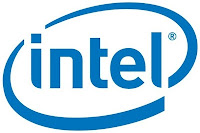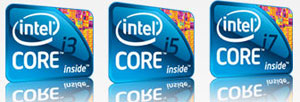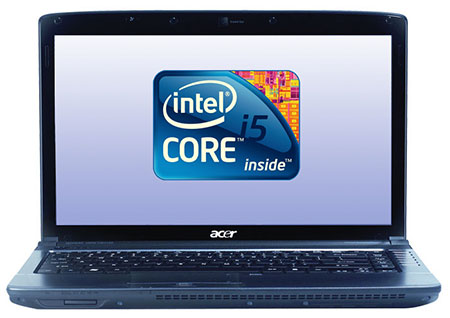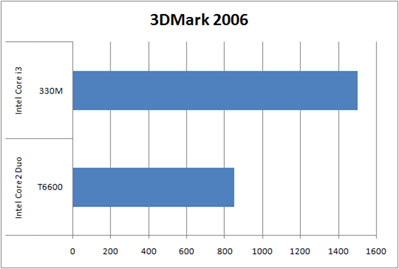Saturday, September 27, 2014
Intel Core i3 i5 and i7 Review

The current notebook that uses the latest Intel processors have started using the Intel Core i family. There are named Core i3, Core i5, and Core i7 processors. These three are the official replacement from the ranks of Intel Core2 processors (dualCore, Core2 Duo, Core2 Quad). Any improvement offered by the Core i? We will try to explain as simply as possible about the new line of notebook processors.

Nehalem
All Intel processors with the name Core i built with the basic architecture named Nehalem. Simply put, this new architecture offers higher performance with lower power consumption settings is much better. There are some things which are the primacy of the Nehalem architecture in General, when compared to the previous Core Architecture:
The incorporation of components
On Nehalem, there are some components that are combined into one inside the processor. The most important thing is the incorporation of the controller memory (RAM) into the processor. Previously, this controller located outside of the processor. With the inclusion of drivers into memory, processor speed the flow of data between the processor and memory become higher.
On Core i3, Core i5, and Core i7 M-M, Intel even put her into the VGA processor. This of course makes the ability to be better than VGA VGA onboard. foregone
Power efficiency, performance-maximizing
On the Core2 Duo (with 2 processors/processor core 2 core), if it is a 3 GHz processor speed, that means the second core processors work with speed 3 GHz. processor When resting, they will drop its velocity at the same time as well.
So, if theres any software that can only use 1 processor core (example: Apple itunes), the two core processors will work on its highest speed (3 GHz). One processor core to work processing data, while others are just raise core speed without processing data.
On the Nehalem, his condition is different. For example on Core i3 (2 core/core 2 processors), the conditions above will only make 1 processor core work and use its maximum speed. While the one unused processor core will still be resting to conserve energy.

Hyper-threading technology (HT)
Did you know that a processor core is not always "hired" to its full potential? As an analogy, consider a processor with two cores (dual core) is a room with two people in it. When one man asked Cook, both hands will work. However, this person is still able to receive phone calls while cooking, isnt it?
The same thing happened at the core processor. There are parts of the processor core that is unused when a command given to him. The cause is the order may indeed not make use of certain parts of the processor. Then, how can we make use of parts that do not work? Intel named maximizing work processor technologies such as Hyper-threading (HT).
A processor core with HT technology will be recognized by the Operating System (example: Windows7) as the core 2 processors. So, the Operating System can provide 2 work on a processor core. This makes the Nehalem-based processor is able to work more optimally than its predecessor.

Turbo boost
This ability is the flagship feature of most processors with Nehalem technology. The basic idea is HUGI (Hurry Up and Get Idle). His theory is that if a work completed faster, the processor will be able to rest faster and save more energy.
In General, each processor has a maximum power consumption. Lets take the example of Core i5 (2 core processor/core) that limit its consumption is a range about 35 watts. If the VGA memory in the controller and Core i5 consuming 10 W and only 1 processor core that is unused, only consume 22.5 Watt, isnt it? Then, how can get the job done with processors faster, while the software does not use the core 2 available?
The remaining rations power consumption 12.5 W can be used to perform Core i5 Turbo boost. That happens is (on Core i5-430M, 2.2 GHz), a speed of 1 point can be raised up to 2.53 GHz. This is done by utilizing the remaining rations power consumption and having regard to the temperature of the processor. So, the processor will not go beyond the 35W consumption power, and will not heat. Meanwhile, the software can get the job done faster.
Arrandale
What is it? The name was adopted to differentiate from our Core i7 QM with Core i7, Core i5 and Core i3 m. currently, Core i7 Nehalem technology QM still use 45 nm. Even though its huge-powered, 45 nm technology in Core i7 make it work a little more heat. In addition, Core i7 also has no VGA QM in that 4-processor (Quad core).
Arrandale is code for processors Nehalem-based notebook that uses technology for 32 nm and having VGA integrated inside the processor. Currently, only has the Arrandale processor maximum core 2 (dual core). However, performance remains high and the temperature it works tend to be cooler than the Core i7.
Choose which one?
At first glance, the Nehalem technology that belongs to the Core i7, Core i3, and Corei5, already displayed. Well, now, you will choose which one?

Core i7 QM
Notebook processors Core i7 QM has the ability. There is no VGA in this processor, but 4 core processors (quad core), high speed, and Turbo boost is a mainstay. Processors with 4 cores and hyper-threading will be detected as if Windows has 8 processor cores! If you need the highest performance notebook that is even able to compete with desktops, it is her choice. Generally, a notebook with Core i7 will have a special VGA. So, gamers, user graphics applications (Adobe Photoshop, 3ds Max), and high performance lovers will love it. Of course, there is a price to be paid for this high performance.
This is the Arrandale processors (core 2 processor) with the best performance. 32 nm technology to make it work with relative low temperatures. High speed, Hyper-threading, Turbo boost and make it has a high performance. When combined with additional VGA, notebook-based Core i7 M would be an excellent choice for lovers of high-performance. His ability can even compete with Core i7 QM. Of course, with a relatively more affordable price.
Core i5 M
Notebook with this processor did have a 2 core processor (dual core). However, the availability of Hyper-threading makes it appear as if it has 4 core processors. Turbo boost into its flagship in terms of performance. In the meantime, already insufficient to counter VGA playback HD movies 1080p, Blu-Ray movies even. If necessary, some lightweight 3D games can range. If you want high performance with good mobility, Core i5 is a good choice. The price is not suffocating.
Core i3 M
Although not equipped with Turbo boost, the Core i3 performance still Captivate. Hyper-threading makes its ability to be used to its full potential. VGA-his are more reliable than previous onboard VGA. If youre still wanting the performance of the best architecture, Intel Core i3 is a far superior option than the Core2 Duo.
Testing Brief
Here are the results of a comparison between the Core2 Duo T6600 with Core i3 and Core i5-330-430

Software which is a simulation of the use of various applications (MS Office, Adobe, 3ds Max, MS Outlook, etc.) shows that even Core i3 330 easily defeated the Core2 Duo T6600.

Software similar to this more focussing on SYSmark simple application commonly used notebooks. Ujinya results are not much different from the previous ones.

3DMark 2006 is a free test of graphics capabilities. From this it appears that testing Core i3 330M alone is winning more than 50% over VGA onboard the paired on the Core2 Duo T6600 (WXGA Intel GMA).
Subscribe to:
Post Comments (Atom)
No comments:
Post a Comment